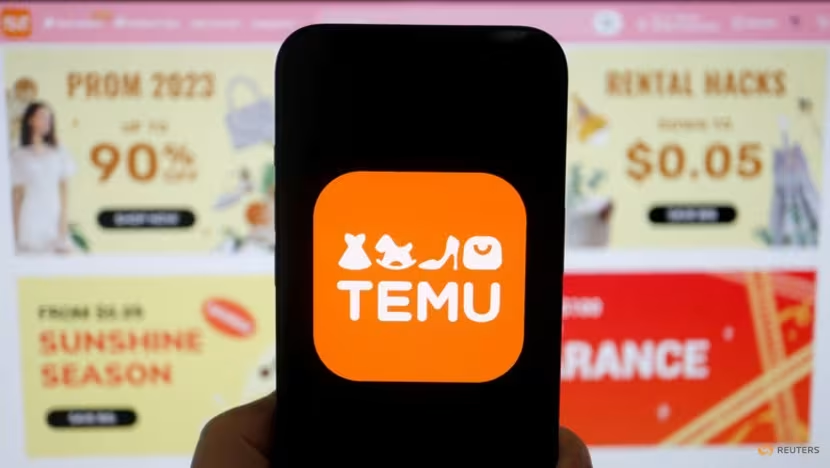We had previously written about the fight between tech giants in the Southeast Asia region and commented on each party’s cross-border investment strategies, and the last concluding remarks were that Softbank and Alibaba have more tendency to win this proxy war, as their investment strategies were seemingly more diametric and aggressive.
Some might have thought that the information in the previous article was insufficient to support its concluding comments. After all when pointing out that Tencent is not as active and aggressive in its investment strategies as Alibaba, Tencent’s achievements overseas in the gaming and content industry weren’t being included. To supplement that, today we will provide an overview of Tencent’s overall performance in the Chinese and overseas mobile gaming markets, plus a short summary on its cross-border investment strategy.
Tencent as the sole player in China
Some background information on Tencent: being China’s top Internet and gaming company, Tencent reached IPO in HKEX (Hong Kong Stock Exchange) in 2004. Since then, their stock has risen by more than a hundred-fold than at its initial listing. With a market valuation of approximately USD$560 billion, Tencent is currently Asia’s most valuable listed company.
Tencent, along with NetEase, accounts for 70% in China’s gaming and content industry. Tencent’s model for success has been to expand its customer base through video games and connected web services, with the most notable successful cases being King of Glory and Zloong, as daily active user (DAU) of the former was as high as 50 million and covered 17.7% of Chinese gaming market revenue in 2016.

Layout in overseas market
To further expand its influence in international markets, Tencent’s weapons for cross-border investments are concentrated on Wechat, gaming and acquisition. Especially for gaming, Tencent has invested in several world-famous gaming companies over the past few years, including a massive investment of US$0.33 billion to acquire 48.4% of Epic Games in 2012 and the complete acquisition of the developer of League of Legends, Riot Games.
Nonetheless, as the money raised from re-introducing popular games into the market was still limited, Tencent was forced to adopt a brand-new investment strategy in search of the next blue ocean. The result of in-depth market data analyses was the decision to divide its capital used for cross-border investments, investing less capital (around US$3 million) over a greater number of younger gaming companies to accumulate a larger customer base and gain a stronger footing in overseas markets.
In terms of prospects for the overseas mobile gaming market, many Chinese gaming companies are setting their sights on cross-border development to escape from the monopoly of Tencent in China. Opportunities are huge out there, and from AppAnnie statistics we can observe that a majority of income from overseas markets stem from more mature, well-developed markets. For instance, US contributed more than 30% of the total earnings in the gaming market, with Japan ranking second at 10%. Countries such as UK, Germany, France, Korea, and Taiwan accounted for 1% each.
However, despite having strong head-starts, Sea Group Limited (formerly Garena), is nowhere close to its parent/partner company Tencent in terms of profitability.

Sea Group Limited, an operations and distribution leader in Southeast Asia for PC and mobile games, managed to raise US$884 million for an IPO in the NASDAQ. That said, while Sea managed to rake in US$195 million in revenue, it made net loss of US$165 million over the course of 2017 as its sales and marketing expenses skyrocketed, hitting a record-high negative net margin of 84 percent.
Tencent is also partnering with another Series-C startup, VNG. Eyeing for New York IPO, VNG’s has huge potential and will continue to sway its influence across the Southeast Asia region.
What to expect

Although Tencent is itself the best at gaming and content, its partner companies’ performance has been unexpectedly below expectations in the Southeast Asian region. We assume this might have something to do with market maturity, as there is definitely space for improvement since mobile penetration and internet usage rates are still rising in the region. Additionally, current unsatisfying financial performance for Sea and VNG won’t be permanent, since the economic chain effects from mobile games – stemming from customer base, digital payment gateways and so on, are about as developed as the e-commerce industry. It simply requires some time before those benefits can be fully enjoyed.
Furthermore, though Tencent has always said it is pacing itself for a bigger comeback in cross-border investments, it hasn’t been brave and fast enough when it comes to making an investment in industries it is not familiar with. Yet owing to golden deals have escaped its grasp during negotiations with promising brands for potential partnerships, it is ultimately still recommended that Tencent acts on its plans more aggressively in the overseas market.
—
Thanks for reading The Low Down, insight and inside knowledge from the team at Momentum Works. If you’d like to get in touch with us about any issues discussed on our blog, please drop us an email at [email protected] and let us know how we can help.
—
Thanks for reading The Low Down (TLD), the blog by the team at Momentum Works. Got a different perspective or have a burning opinion to share? Let us know at [email protected].








![[Press Release] Southeast Asia’s food delivery spend reached US$17.1B with Vietnam achieving the highest growth](https://i0.wp.com/thelowdown.momentum.asia/wp-content/uploads/2024/01/Food-delivery-platforms-in-Southeast-Asia-2024-_MW_Jan-2024-2.jpg?resize=218%2C150&ssl=1)


![[New Report] Food delivery platforms in Southeast Asia (SEA) 4.0](https://i0.wp.com/thelowdown.momentum.asia/wp-content/uploads/2024/01/Food-delivery-platforms-in-Southeast-Asia-2024-_MW_Jan-2024-2.jpg?resize=100%2C70&ssl=1)
![[New report] Southeast Asia spends US$3.4 billion on modern coffee in 2023](https://i0.wp.com/thelowdown.momentum.asia/wp-content/uploads/2023/11/Coffee-in-Southeast-Asia_MW_Nov-2023-1.png?resize=100%2C70&ssl=1)
![[New report] Apples to Apples 3.0: Benchmarking major tech platforms – what’s next after achieving profitability?](https://i0.wp.com/thelowdown.momentum.asia/wp-content/uploads/2023/09/Apples-to-Apples-3.0_benchmarking-major-tech-platforms_whats-next-after-profitability_MW_Sept-2023-7.jpg?resize=100%2C70&ssl=1)






